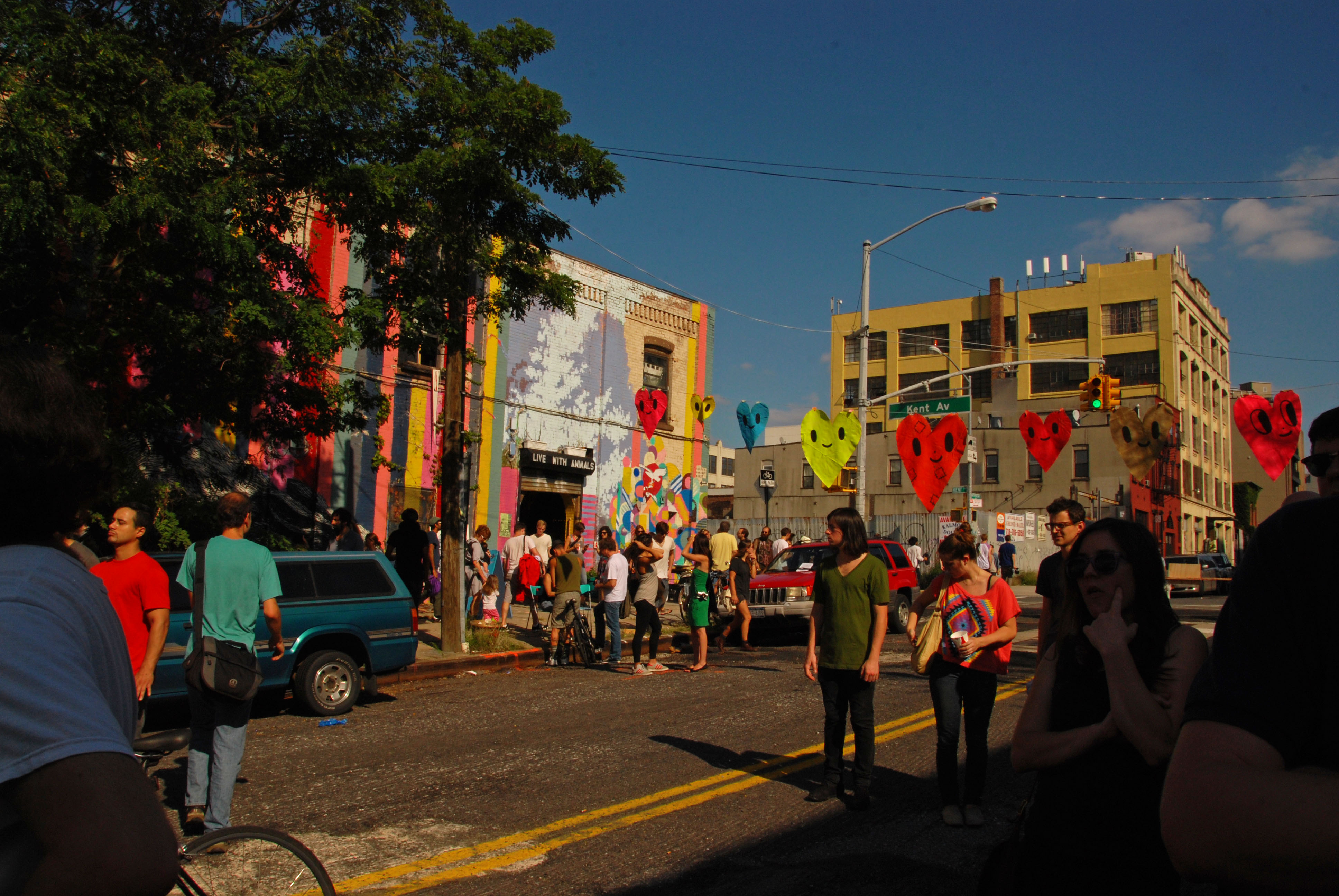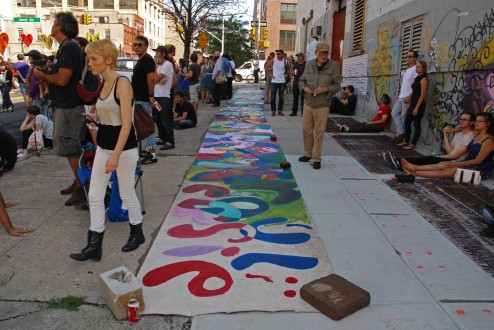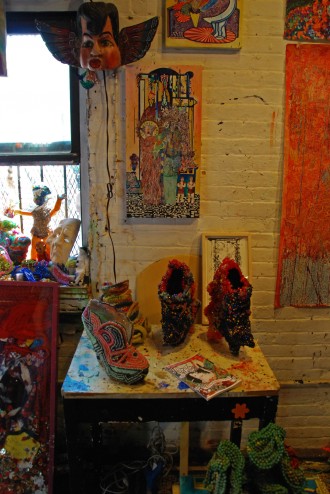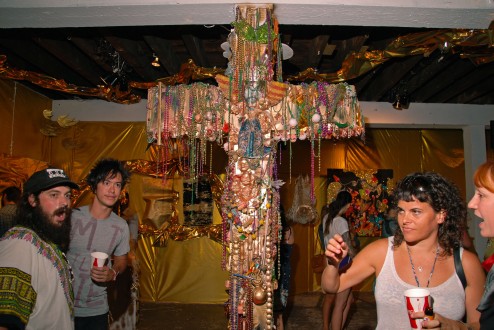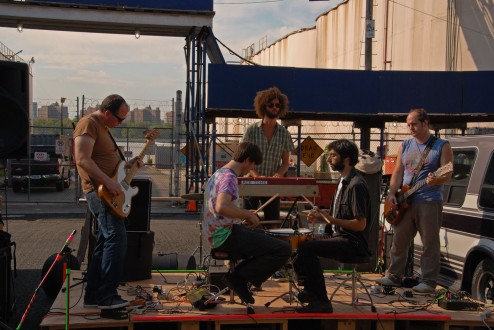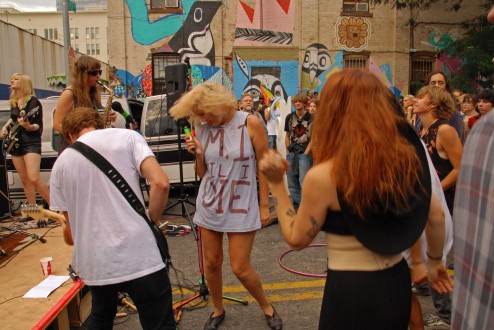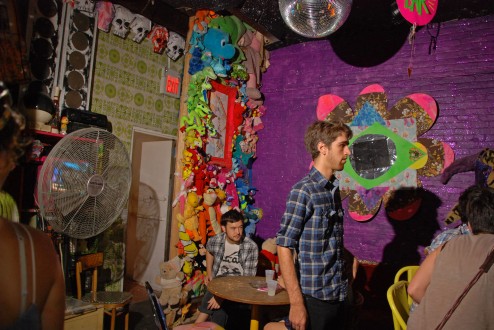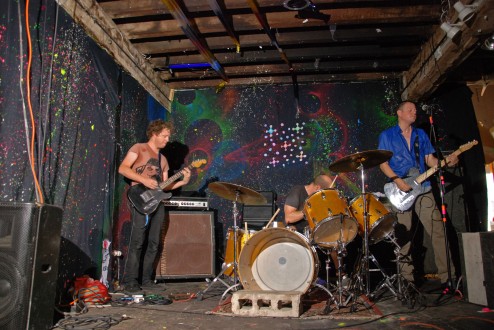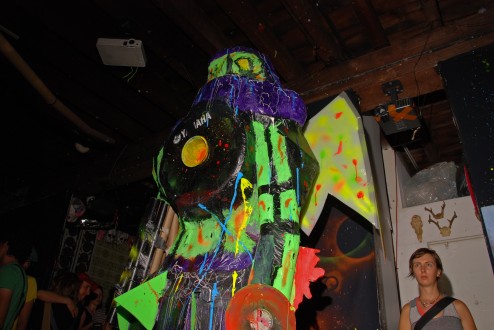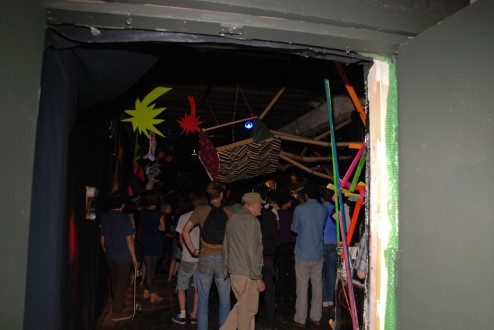page not found (chaos cooking)
space type: event space | neighborhood: bushwick | active since: 2009 | links: website, facebook
Like Red Lotus Room’s Shanghai Mermaid, Page Not Found is best known for one of its recurring events: Chaos Cooking, “A continuing social experiment where up to 60 people cook 60 recipes in one kitchen, four burners, one oven. All dishes must be finished in four hours while everyone is drinking wine, socializing, and putting delectable food in their mouths.”
It’s every bit as fun—and delicious—as it sounds. The last time I went, I ate: bacon-wrapped dates stuffed with gorgonzola, pork & Brussels sprout shooters with pickled cauliflower chasers, nachos, Persian-spiced truffles, edamame hummus, tiramisu, beer & cheese soup, winter melon salad, and dozens of other delicacies—all made on the spot, all at once. I made endive stuffed with goat cheese, raisins, and an amazing sauce from the Brooklyn Salsa Company. The event, of which there have been more than twenty in a couple of years, draws all kinds of people, from all ages and demographics, including hipsters, foodies, neighbors, Burners, Couchsurfers, and the generally curious. Everyone is invariably kind and courteous and can’t wait to hear what you’re cooking.
Page Not Found is home to Joe and Margaret and their two cats, Baloney Gabba-Goo and Eddie Tuna Cupcake Mohawk Feather Teddybear Pancake Weezer Haiku (says Margaret: “We usually call her either Pupcake or Fatty Tuna or Haiku”). They used to host some wild parties, but these days they’re more likely to have art shows, modern dance performances, and bands in their space. But Chaos Cooking is still their pride and joy, and they’ve just launched a website to spread the word, and to encourage people to host Chaos Cookings in their own city, town, or backyard.
brooklyn spaces: What made you decide to do
this?
Joe: It started out of a longing for that
feeling you get when you’re with your family during the holidays and everyone’s
in the kitchen cooking at the same time, chatting and gossiping and catching up
and laughing and asking each other, “What can I do to help?” It’s just a great
feeling. So we tried it once, with eighteen friends, and it was wonderful. I
think the second one had twenty-five, and we thought that would be crazy, but it
still seemed to work.
Margaret: People kept asking, “Can I bring
my friend to the next one?” And we were like, “Next one?”
brooklyn spaces: I first read about Chaos
Cooking on Nonsense NYC. What made you
decide to open it up to the community?
Joe: We like people, and we figure if
someone want to come to an event like this, they’re probably someone we’d like
to meet. Nonsense is an amazing list, it kind of changed my life. But listing
there was a bit of a controlled experiment, because not everyone’s reading it.
brooklyn spaces: What are some really
memorable dishes that people have made?
Margaret: One time Ryan did this seven-day
marinated pork. David once made lamb with yogurt-truffle sauce.
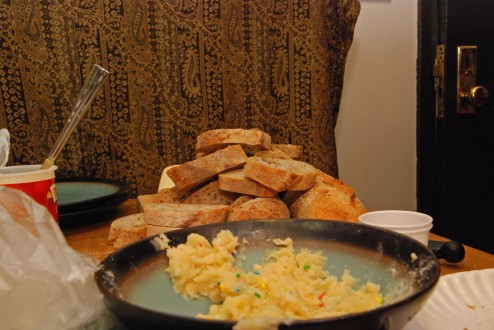 Joe: There was this one guy, I wish I could
remember his name, who was traveling in India, and there’s a certain type of tea
that you can only get on this one mountain there, so he hiked the mountain and
picked this tea and brought it back and made this chai concoction that was just
amazing, like nothing else I’ve ever had.
Joe: There was this one guy, I wish I could
remember his name, who was traveling in India, and there’s a certain type of tea
that you can only get on this one mountain there, so he hiked the mountain and
picked this tea and brought it back and made this chai concoction that was just
amazing, like nothing else I’ve ever had.
Margaret: One time my brother and his
girlfriend made chocolate lollipops with Pop Rocks in the middle.
Joe: There was chocolate-covered
pomegranate, that was really good. I save all the sign-in sheets, which list
what people made. There’s some incredible stuff. Baklava, peaches and pancetta,
coconut-curry lentils… What we really like is that the concept is so simple, and
people are so self-reliant. The more we got into it, the more we realized that
anybody could do this. There are already Chaos Cooking communities that are
bigger than the one in New York.
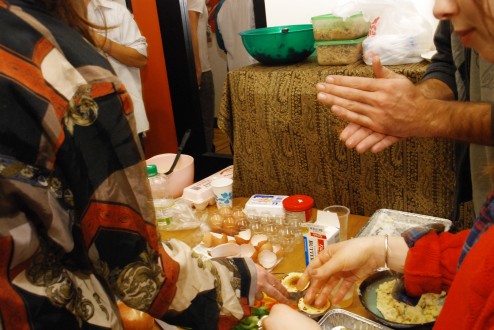 Margaret: There’s one in Winston-Salem,
I recently learned. I think they most likely heard about it from the New
York Times article
that was written about us, or the NPR piece.
Theirs seems a little different, more families, with a down-home kind of feel,
but it looks like they have a great time.
Margaret: There’s one in Winston-Salem,
I recently learned. I think they most likely heard about it from the New
York Times article
that was written about us, or the NPR piece.
Theirs seems a little different, more families, with a down-home kind of feel,
but it looks like they have a great time.
Joe: Chaos Cooking is an idea that spans
gender and age and really any sort of demographic, because everyone loves to
cook, and most people love to do it together.
Margaret: Especially with people you don’t
know very well. It’s really easy to get to know people through cooking.
Joe: It makes people feel comfortable, and
I think one of the things that makes it work is that everyone has something to
do and be proud of, something to share and something to receive, and something
to talk about. It’s like all social barriers are resolved.
brooklyn spaces: I’m always struck by how
calm and kind the vibe is. How did you manage to make these events where
everybody’s just happy and wants to talk to each other?
Margaret: Everybody’s eating!
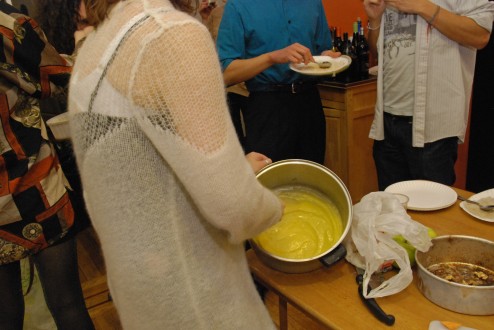 Joe: Yeah, I think that’s the trick. Also, if
you’re a complete jerk, you’re probably not going to go to a cooking
event.
Joe: Yeah, I think that’s the trick. Also, if
you’re a complete jerk, you’re probably not going to go to a cooking
event.
Margaret: I think if you’re a jerk, you’re
probably more of a taker. And if you come to a cooking event, you’re expected to
do just as much as everybody else.
Joe: I never thought about that, that’s a
really good point. I think you’re right, the people who are drawn to it are
givers or contributors. But you’re definitely getting a lot also. You’re eating
a lot.
brooklyn spaces: Do you feel like being in
Bushwick has anything to do with the way this came about?
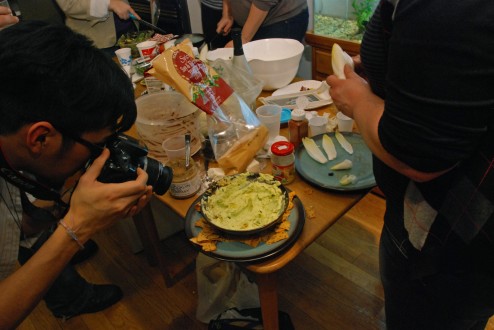 Joe: Well, we really like having it here.
It’s great when the neighbors come over and cook with us. There’s a Puerto Rican
family next door and the mom is really into it. And our neighbor Manny, a
middle-aged African American woman, she brought a couple of her girlfriends once
and they all cooked with us. I think that’s really cool. There’s a feeling of
frontier here in Bushwick, and there’s a little bit of risk. But our neighbors
love us, and we love our neighbors. We don’t hold ourselves in. The neighborhood
around here is a little rough, but the neighbors are awesome.
Joe: Well, we really like having it here.
It’s great when the neighbors come over and cook with us. There’s a Puerto Rican
family next door and the mom is really into it. And our neighbor Manny, a
middle-aged African American woman, she brought a couple of her girlfriends once
and they all cooked with us. I think that’s really cool. There’s a feeling of
frontier here in Bushwick, and there’s a little bit of risk. But our neighbors
love us, and we love our neighbors. We don’t hold ourselves in. The neighborhood
around here is a little rough, but the neighbors are awesome.
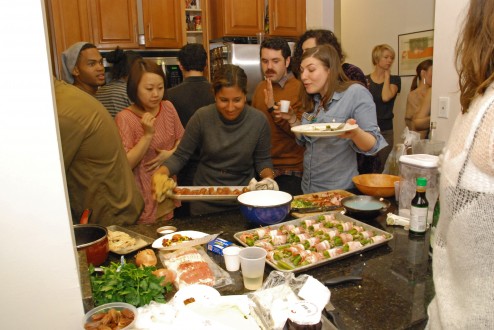 Like this? Read about more
food event spaces: Egg & Dart
Club, Ger-Nis,
Breuckelen
Distilling, Treehaus, Grub
at Rubulad
Like this? Read about more
food event spaces: Egg & Dart
Club, Ger-Nis,
Breuckelen
Distilling, Treehaus, Grub
at Rubulad

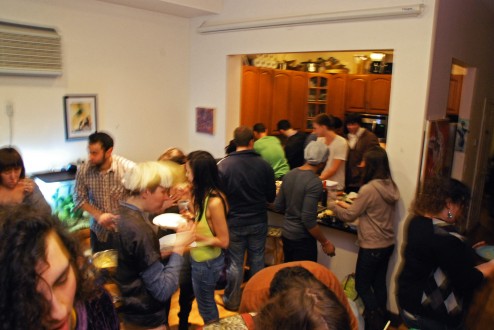
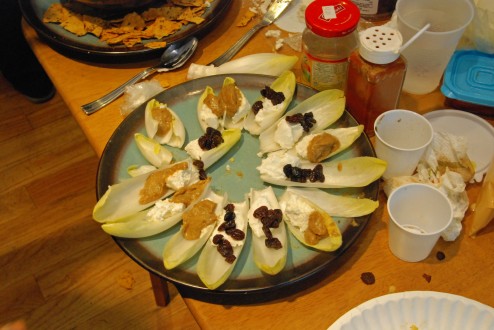
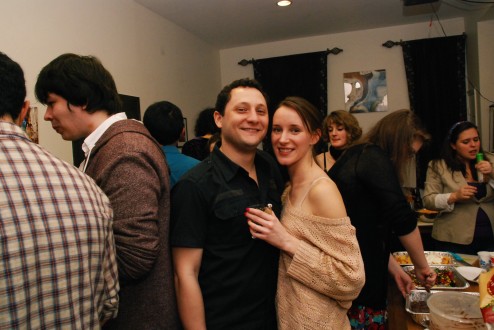
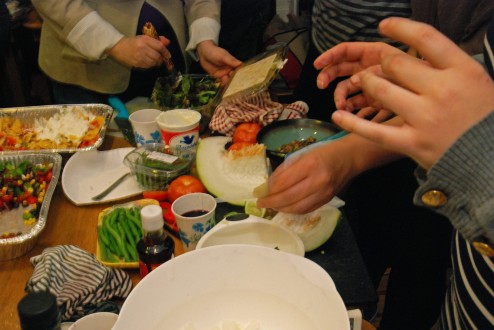
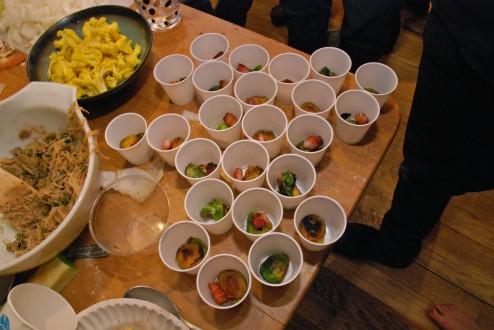
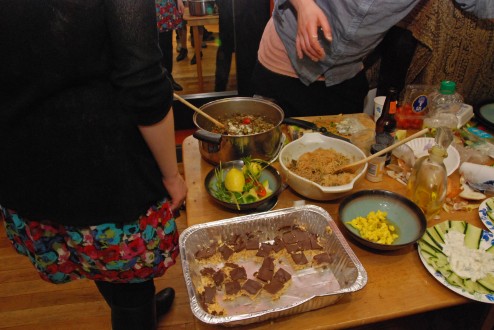
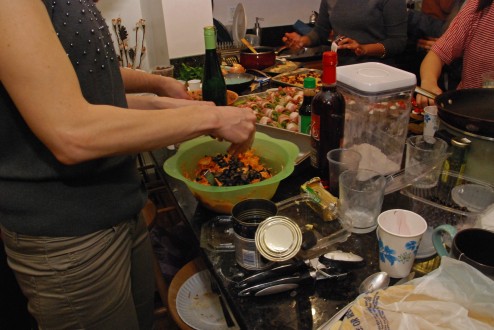

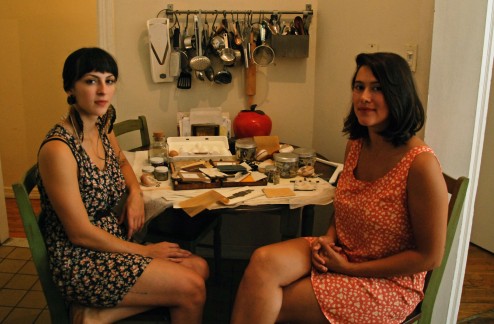
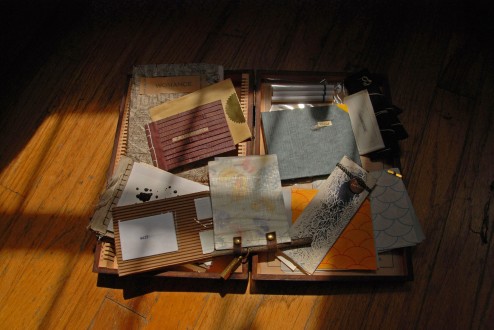
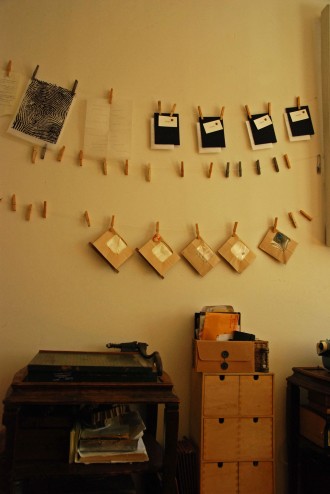 Alaska:
Alaska: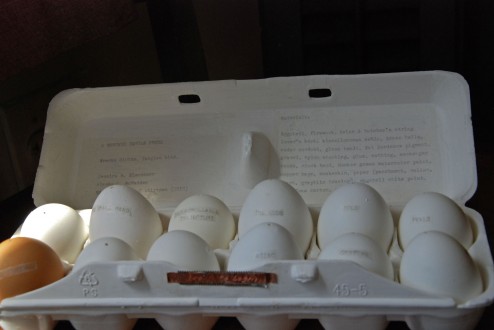
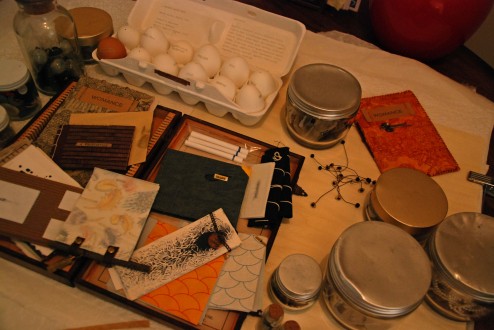
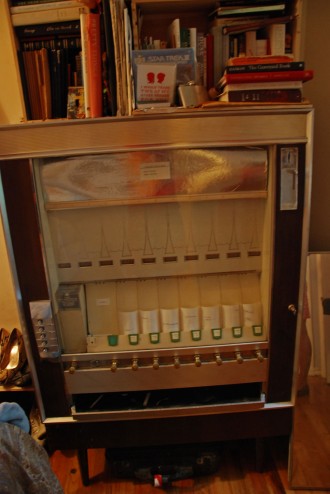
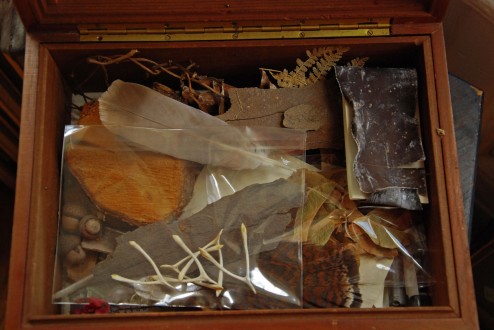
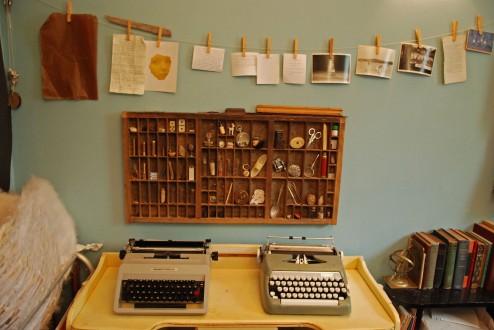
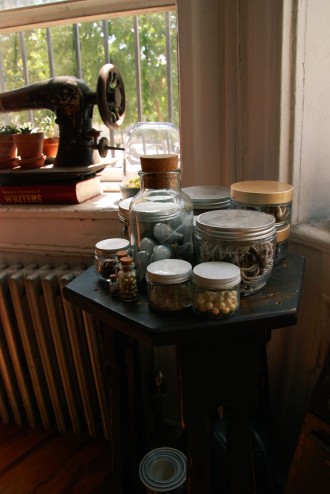 Jessica:
Jessica: